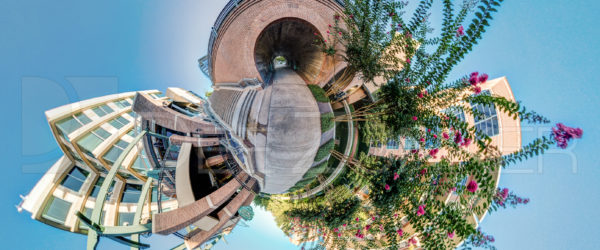I have had a couple of friends ask about my travel night shots lately, and I thought I would share some pointers to get you started. But first, I will show you a shot I took in Fisherman’s Wharf, on the way back from dinner with several non-photog colleagues. I saw the shot, got set up, and took a couple of frames. This was a shot that I knew it, when I saw it. I like the details and the colors.
First The Technical Stuff:
1. No Filters
2. Use a tripod
3. f-stop between 3.5-5.6. With a tripod you can easily go up to f8 f11, but shutter speed will increase. I typically use the 3.5-5.6
4. Normal ISO between 200-400
5. I do not use the long exposure NR, as the camera will take a second exposure immediately following and have control over your camera. I like street opportunities, and I would be afraid of missing something. I use noise reduction in lightroom if needed. At low ISOs, noise is low anyway.
6. Use a cable release or a delay after the release. I do not use the cable release, because my L-bracket is in the way. I set my delay to 2 seconds, so I press the shutter, then wait for the camera to do its thing. This reduces camera shake, and makes the image sharper.
7. I use auto white balance. Night light colors are all over the place, and I will play around in lightroom to get the right white balance for the particular image.
8. I always shoot in RAW. This gives me the ability to dial in the white balance to a precise setting, and gives more room in adjusting exposure.
9. I will shoot the shot a little loose, keeping enough space to have different aspect ratios later for framing: 12×18, 8×10, 12×12, 5×7
10. I have an L-bracket to allow me to get the vertical shot, and will try to take each image in both directions. Sometimes though a particular shot is only a vertical shot or horizontal shot, and I will not take the other direction. I like vertical for my wall, and horizontal for my computer screen. If you do not have an L-bracket, you can shoot the shot loose enough, so you can crop it vertically in post processing if desired.
11. Make sure you are level. Use the level in your camera on the back of your LCD, or better, use a hot shoe bubble level (aka spirit level). This is a must especially with wide angle lens and their diminishing lines.
12. Make sure you are square to your shot, especially with wide angles. Unless absolutely necessary to get the shot, keep the front of the camera parallel to the scene. The hot shoe level will help you get the up/down tipping corrected, but the left-right angle to your subject has to be looked at also. Many times the diminishing lines of the angle is what you are after with a wide angle. I like using these lines in my images, but I try to keep the effect in only one direction, otherwise it is unclear to the viewer later if the image is straight or not. Pick a vertical line as reference point in your image, that will be at 90 degrees to your horizontal also to help the viewer know your image is straight.
13. For night shots, Automatic mode does not work. The meter in your camera tries to make the exposure like daytime. I will usually start in aperture priority mode to get the shutter close to where I need it to be. I then switch to manual mode, put the shutter a couple of notches faster than the aperture priority mode, and take a test shot. I check my LCD, and make adjustments. I do not use the histogram for night shots. I really go with feel of the image on the LCD. Once I have the shutter speed where I want it, I go to the creative phase.
Now The Creative Stuff:
I have mentioned to shoot loose a couple of times. This does not mean you should not study and plan each shot. Think about what the place is telling you. Much of the creative process is intuitive, and the art of photography is getting that intuitive feeling out of one side of the brain and translated, so the logical side of the brain can make deliberate decisions.
Do not be afraid to chimp, aka look at the back of your LCD. You will not have a chance to redo this moment, so make it count now.
1. I first look at the LCD at a distance, and ask myself if the LCD image gives me the same feeling when I look back at the scene. If it did not, I start looking at more details. What is my brain focusing on intuitively, and is different than the LCD: exposure, lighting, slightly different angle: left-right-up-down, different focal length?
I will take several images in this process to hone in on the shot. I may still not be able to make the decision in the field, but when I do my post processing, one image will start to stand out.
2. After I get that “feeling” close, time to get in logical mode and focus on the details of the image in the LCD. I will zoom in to the shot to see what is there.
Where is the trashcan(those pesky critters), a piece of trash, a sign leaning into the corner of the image, someone picking their nose, a person staring at you, a totally distracting highlight, someone’s hand is a not-so-appealing place. I think about how I can adjust to get rid of those elements? If not, can I adjust to make it easier to remove later in photoshop?
3. Moving objects will be blurry. Use that to add to the scene.
Safety:
1. Keep an eye on your surroundings
2. Watch the placement of your tripod. If you are blocking foot traffic, someone will say something to you.
3. Ask forgiveness, not permission
4. Do not set your stuff down, keep it on you, and closed up.
5. Travel light, so keeping it on you is not a burden.
6. Lock your gear up in the hotel safe when out, or take it with you. If I have to leave stuff behind and not in the safe, I do not leave it in my travel camera bag, I hide it in my suitcase.
7. Keep a backup of your images in the safe as well, so if you are ripped off when wondering around, your still have something to take home.
8. Stay in well traveled areas if alone, and know where you will walk if someone starts to approach you and makes you uncomfortable.



